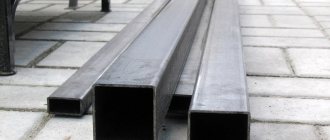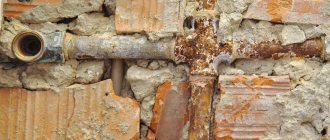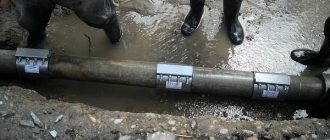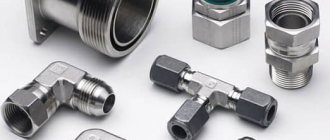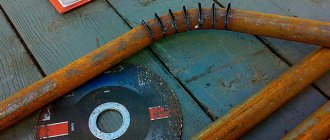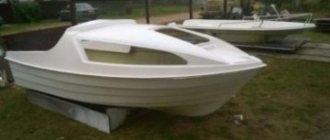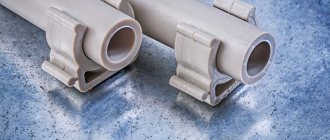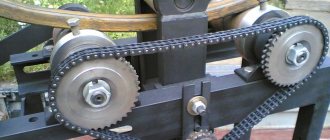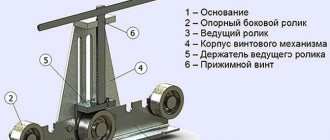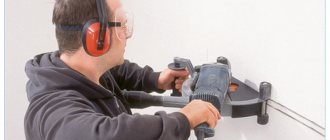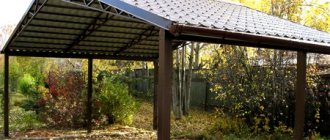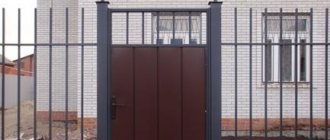Fans of active recreation will enjoy rich leisure time and new experiences, such as target shooting with a homemade bow or hunting. How to make a bow from PVC pipe if you have little experience? Those who are interested in this issue should familiarize themselves in detail with the technology, which is not complicated. However, if the first pancake is lumpy, then there may be shortcomings here too, and it is important to rely on tips from specialists who are willing to share similar experiences.
You can build a bow and arrow from unnecessary pieces of PVC pipes of different diameters.
What is important to know about making a homemade bow from a plastic pipe?
Not everyone can make a bow from a PVC pipe with their own hands. It’s even more difficult to make it according to all the rules, from good 7-year-old wood, so plastic will help you! If you have something to heat up a PVC pipe marked SCH40 or a similar format, with a sufficient wall thickness of 3 mm. Everything else is straightforward, although it is difficult to replace the bowstring with decent modern material.
Why a plastic pipe? It has enough strength and flexibility to make tension for the shot. If your hands are trained and the bow is made with high quality, then hitting the target is almost like a crossbow or a real sports bow. Using the same principle, children’s bows are made with their own hands, but a half-inch pipe is used for this. They are sold in three-meter lengths, which is enough for 2 bows. It is easy to heat a PVC water pipe with a construction hairdryer to 160-180°C to form the product of the required shape. Main parameters of a plastic pipe:
- diameter ¾ inch;
- outer diameter 26.7mm;
- the length of a single pipe is 3.048 m, for a bow 1.5 m is enough;
- maximum pressure up to 33 atmospheres;
- outer diameter 26.7mm.
You can cut the pipe to the required length with an ordinary hacksaw
Structural details of a homemade plastic bow:
- base or handle;
- arrow window in the center;
- shoulders (preferably reinforced with an internal insert);
- notches for the bowstring and the bowstring itself (synthetic analogue).
Advice! Stock up on work gloves and thick, non-flammable fabric to make it easier to shape a hot product with your own hands.
Do not forget that you need real or homemade arrows, which used to be worn on a belt or on a belt over the shoulder in a special device - a quiver.
Method No. 2.
This method is also quite simple and has a clear manufacturing process. Of course, you initially need to choose the material to create a homemade bow. You need to pay attention to ensure that the choice of material is exactly what you need. There is no need to consider options for polypropylene or polyethylene pipes. To create a bow you need a pipe made of polyvinyl chloride . It is important to know that all information about the product is located in the form of markings on the outside of the pipe.
In most cases, polyvinyl chloride pipes are on sale with length parameters of 3 meters. If desired, you can make two excellent bows from a three-meter pipe.
We begin to heat the first shoulder of the bow
As in the previous method, it is necessary to mark the product. At the same time, mark the central point; it should be located strictly in the middle of the pipe. Then you need to allocate a place for the future handle, stepping back from the central point in both directions by 6 cm.
Separately, to ensure correct and even support for the clamp, it is necessary to make two bars of a size equal to the length of the pipe.
The second shoulder is formed in the same way
The next stage of the manufacturing process is no different from the previous method. After one of the parts of the future onion has been well heated, this part must be laid on the board, holding it with the other. The degree of heating of the pipe can be determined even by sight; it should become sufficiently flexible and soften. In the area near the future handle, the board with which the shape of the product is created and acquired must be placed on any support. This will create an acceptable transition in the thickness of the handle and prevent unnecessary deformation. After the pipe has returned to room temperature for some time, the clamp can be removed by removing the wooden strip. By performing similar actions with the second part of the bow, the result should be flattened ends of the product.
Now attach the bowstring
Next, you need to create a comfortable handle. Using a construction hair dryer using the same technology, you need to heat the required section of the pipe, focusing on the marks, until it becomes soft. When creating deformation in this area, you need to follow all the rules of the first method of making a bow. It must be remembered that the narrowed parts of the ellipse should look in opposite directions relative to the vertical axis of the bow. In order for the handle to be comfortable, when creating it, you need to take into account the size of the palms of the person for whom the product is being created.
Cutting with a hacksaw for metal
To create fasteners for a nylon thread, it is necessary to retreat approximately 7 cm from both edges of the future bow. Again, the marked sections of the pipe must be properly heated and bent by 65 degrees.
After the pipe has cooled to room temperature, you can begin making a fastener for tensioning the nylon string. To do this, you need to make markings on the edges of the bow and cut at the given points with a saw for metal products. Using a grinding tool, you need to process the sawn areas and, if necessary, use sandpaper. To process the second part of the onion, all of the above steps must be repeated exactly.
the onion is ready. Its draw force is 19 kg (according to the law, the upper limit on draw force for a bow without a license is 20 kg)
Well, in conclusion, you need to tighten the bowstring. If this is not available, a polypropylene rope or other similar thread may be suitable. The force that acts on a stretched polypropylene rope is approximately 20 kg.
Brief step-by-step instructions
Before you start making a sports or hunting bow from PVC pipes with your own hands, it is worth understanding the main stages of the process.
- Measure the required length of plastic water pipe.
- Mark the center and the intended places for bending the ends and for notches for securing the bowstring on both shoulders, which will have to be bent.
- Proceed to warm up one shoulder and flatten it.
- Press the heated and flattened fragment until cooled, giving it the desired shape.
- Similarly, warm up and form the second shoulder.
- The section of the handle is heated to bend it to the characteristic shape of the bow.
- Notching on each side.
- Forming a window for the arrow.
- Bowstring tension.
- Testing a bow in shooting practice.
To form a bend, the pipe needs to be heated; for this you can use a hair dryer
Attention! The simplicity of the technology should not be misleading that everyone gets a bow from a PVC pipe for the first time. Errors cannot be ruled out, which experts take into account when repeating tests. There are several similar technologies, and each has its own rational grain.
Typical mistakes:
- The process of heating the PVC pipe is incorrectly organized, after which it is difficult to flatten and bend the shoulders;
- Without a hair dryer, it is impossible to achieve the required temperature throughout the entire heating section; the plastic cools down before the shoulder is formed;
- a futile attempt to flatten the pipe without heating and securing it with a clamp;
- overheating leads to brittleness of the material, a sign that PVC turns yellow;
- a plastic pipe overexposed under a hot hairdryer loses its elasticity, after which it is impossible to fully form the onion, the process will have to start over;
- If the bow was completed but was overheated during the manufacturing process, it may crack during testing.
It happens that everything was done according to the rules, but the bow, made with your own hands, does not hold its shape and bends in the opposite direction. Such a bow is simply thrown away and a new one is made.
Another problem is an “unsighted” bow, which makes it difficult to hit the target. They are used only for training muscle strength if there are several people willing to shoot with one bow. A plastic bow is inexpensive, and if you approach this process creatively, you will get a beautiful product.
To flatten the ends of the bow, you need to clamp them with clamps between wooden blocks; any other method will result in pipe deformation
Handle
She is one of the important elements. The better it is, the more convenient it will be to use the bow. So, the handle must have sufficient rigidity. First, we make one part - the mold. It is turned from wood, after which a molten piece of pipe is driven into it and molded according to the required parameters.
If suddenly the tube has cooled down and the handle is not yet ready, you need to heat it up again. Afterwards, the two parts, the shoulder and the handle, are heated together and inserted into each other.
Recommendations from experts on making bows from PVC pipes
Before you begin, you should study the advice of those who already have experience working with such products.
- The bow handle is shaped individually to fit the palm, so there is no exact data on the bend radius - it varies. Sometimes you have to change 3-4 products to find yours.
- The same goes for the length of the bow and the elasticity of the plastic pipe. Some people like a stiffer model, with a small amplitude of bow bending when shooting. Others prefer a bow that is very bendy.
- It is advisable to sand the notches for attaching the bowstring well so that the attached base does not fray. In ancient times, this place was wrapped with leather laces, with which a string made of veins from specially prepared animal intestines was wrapped and tied to the base. Wide strips of leather are also wrapped around the handle - for aesthetics and convenience.
- The bow string notches on the flat and curved ends of the bow are most easily formed with a metal cutting tool. Everyone makes a shelf or a window for an arrow to their own taste; they can do without it.
- The tension force of a finished bow for adults varies from 10 to 19 kg - this is the upper limit specified by law (for products without a license - up to 20 kg).
- It is difficult to find a high-quality bowstring, especially in the periphery, so polypropylene twine, fishing cord and other durable rope materials are used.
- Creating an aesthetic bend with your own hands is problematic for beginners. You can wrap the heated ends of the shoulder with foil and bend it around a round wooden block. Secure with a vice and leave until cool. Foil is used in the workplace and for fire safety, to lay a hot product.
To attach the bowstring to the edges of the workpiece, you need to cut grooves or make holes
Making a bow from a PVC pipe with your own hands is not so difficult, the main thing is to follow the rules for working with PVC products.
What parts does an onion consist of?
This product consists of:
- Shoulder;
- Handles;
- Bowstrings;
- Strel;
- Final design.
To make a durable arm, a pipe blank one and a half meters long is used. The handle is also made from it, or supplemented with a wooden blank.
The length of the handle depends on the hand of the person who will use the bow. A strong fishing line is used for the bowstring.
Other picnic crafts made from plastic pipes
Craftsmen willingly share photos of DIY plastic crafts on social networks. The products are not only aesthetic, but also practical.
For outdoor activities on a picnic, folding homemade furniture made from PVC pipes and fittings is suitable, which can be easily disassembled and placed in the trunk of a car. For relaxing in the shade in nature, you can also build and use:
- homemade stands for fishing rods or spinning rods;
- collapsible tents and marquees.
- small folding table.
Products made from scraps of plastic pipes are a broad topic for creativity. You can make collapsible structures, based on fittings and couplings, and solid ones, which are fastened with self-tapping screws, glue and bolts. White plastic makes beautiful crafts, but they can be given more personality using painting and wrapping, including decorating a homemade bow from PVC pipes.
↑ Manufacturing process
Previously, a certain type of wood was used for such a device. Nowadays this issue can be solved much easier. All you need is two pieces of PVC pipe (approximately 1.5 meters each).
The width of such a pipe may vary. The dimensions of the pipe blank affect the power of the structure.
Tools required for work:
- screwdriver;
- self-tapping screws;
- jigsaw;
- drill.
The bow itself consists of three parts. In the center of the mechanism there is a handle, on the sides there are shoulders and a bowstring. All this is enhanced by the internal insert.
Sequence of work:
- The pipes are cut so that their length is the same.
- A handle for the bow is cut out of wood; two prepared blanks will be attached to it.
- Having prepared the handle, there is no need to rush to attach the workpieces. They need to be prepared first. For this purpose, grooves are cut in the end part of the pipes; blocks will be located in them, which are needed for high-quality tension of the bowstring.
- Shoulder attachment. The two prepared pipes will be the arms of the bow. They are not difficult to attach. This can be easily done with a few screws. All fastenings must be made securely.
- The ends of the shoulders are slightly warmed up and bent outward.
- Small notches are made at the ends of the shoulders. They will serve as a place to attach the bowstring.
- The string needs to be pulled very tight. It is recommended to use a strong rope that is resistant to stretching and deformation as a bowstring.
Bowstring
First, a bow-sized reel is made, after which the fishing line is wound. The two ends of the product are tied together to form a single closed ring, after which the entire string is wound together with the loops.
Decor
After the onion is ready, it can be decorated. For example, paint it in a protective color or in one tone. Thanks to the whiteness of the PVC pipe, the color will be rich and beautiful. It is better to use acrylic paints. Also, for better operation, the bow body can be treated with polymer impregnation.
As for arrows, they can be made of either aluminum or wood. Their shape and degree of sharpness should be chosen based on future use. If the bow is planned for a child, it is better to take safe suction cups.
The result is a beautiful, functional product that will delight “hunters” of any age.
↑ What are the advantages of such a homemade design:
- Despite its large size, bows made from PVC pipe blanks are very easy to transport. This is possible thanks to the prefabricated structure. After disassembly, such a device along with arrows can be placed in a quiver.
- The low weight of the device makes it superior to factory analogues for hunting.
- High strength. This bow turns out to be much stronger than a homemade device made of wood.
- If a silencer is installed on the string of such a device, then the shots fired by such a bow will be silent.
- If such a device is equipped with a shako, then the combat performance of the bow will increase. It increases the rate of fire and reduces the time to prepare for shooting.
↑ Appearance design
Not everyone makes a big deal of it these days, but in ancient times, every hunter who owned a bow decorated it in different ways. A special meaning was invested in such decoration. Even the smallest detail of the decoration was endowed with great meaning.
A homemade device will become especially individual if you design it to your liking. Bows are decorated in the following ways:
- Painting with special paint for plastic.
- Covered with fabrics and impregnated with polymer. An amateur hunter will be distinguished by a bow covered with camouflage fabric. This design not only decorates the product, but also increases its power. Plastic after this coating easily withstands low temperatures, does not break or crack.
Boom shelf
To do this you will need toothbrushes (3 pcs.) and a piece of PVC pipe. To do this, the pipe part is molded in the shape of the letter G or T. The upper zone of the part is made under heat in the shape of a half ring. The lower part is attached to the handle cavity with simple fasteners.
To make a slot for arrows, the product is put on a tube with a large diameter, and the second part is connected to the handle and smoothed to its shape. In this case, one hand holds the semi-ring from opening and moving, and the other presses the handle against it.
The head of the toothbrush is wrapped in several layers of tape. This is necessary to prevent damage due to heat. After this, where the brush head passes to the stem, bend it. All parts are connected with small screws.
